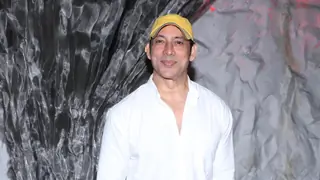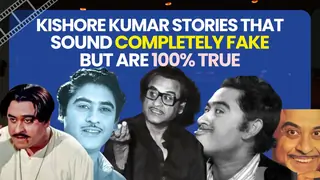Laxmikant Pyarellal's immortal relationship with Mohamand Rafi.
By: Souvik Chatterji.
Master of Law, Case Western Reserve University, Cleveland, Ohio, USA.
Master of Law, Warwick University,Coventry, UK.
Laxmikant Pyarellal emerged into the Indian film arena at a period when the main stream cinema was flooded with extremely talented music directors, lyricists and filmmakers in the 60s.Already the film industry has created its own unique standard due to the sheer brilliance of Musical Giants like Shankar Jaikishan, Naushad, Madanmohan, Roshan, Khayyam, SalilChowdhury and many others and the versatile performance of Mohammad Rafi for over 15 years.
Laxmikant Pyarellar the legendary musical duo included Laxmikant Shantaram Kudalkar(1937-1998) and Pyarellal Ramprasad Sharma (born in 1940).Laxmikant was quite impressed with Mandolin and learnt to play it by his own. He used to play mandolin in street functions. Pyarellal was the son of renouned trumpeter Pandit Ramprasad Sharma and his specialisation was violin. Laxmikant and Pyarelal met at Sureel Kala Kendra, a music academy for children, run by the Mangeshkar family. After Lata Mangeshkar came to know about their financially poor backgrounds, Lata recommended their names to different music directors in the film industry.
Both of them started their career with the film Parasmani(1963).Two songs of Mohammad Rafi "Woh Jab Yaad Aye, bahut yaad aye" and "Roushantumhi se duniya" brought fame for the musical duo. Laxmikant was fond of the orchestration of Shankar
Jaikishan to such an extent that some of their earlier tunes were similar to a huge number of Shankar's compositions.In the next film Dosti,1964, Laxmikant Pyarellal got inspired by a very extraordinary standard of musical performance by Bengali Music Director Robin Chatterji who composed music for the Bengali film Lalu Bhulu,1958.The story depicted a blind boy and a his friend who did not have one leg. In the bengali film all the
songs were sung by Manobendra Mukherjee who was a genius in hindustani classicals and has rich collection of Bengali modern songs, Kirtan, Nazrulgeeti and Bhaktigeeti.
The notable songs include "Dukkhoamar shesh kore dao probhu", "Jar hiya akasher neel nilimaye", "Ei pranjhorona jaglo". The striking part of the film was that no conventional hero or herione were depicted in the story, as the tragic story of the two handicapped friends was the central attraction. Laxmikant Pyarellal had a huge challenge to match the
music of the bengali film and create the same standard of excellence. Both Laxmikant Pyarellal and Majrooh Sultanpuri sat together to compose the songs. The result was history. Rafi's song "Chahunga mai tujhesaanz sawere", "Mera to joh bhi kadam hai","rahi manwadukh ki chinta kyun satati hai", "janewalonzara" brought tears in the pandemonium hall. Rafi was so impressed with the compositions of Laxmikant Pyarellal that he had taken just one rupee for singing the song because it was the custom of a singer to take something in return for a professional song. The film became a huge success. Laxmikant Pyarellal won the filmfare award in 1964 for composing best music in a year when Shankar Jaikishan has composed songs for Sangam, 1964, Naushad had composed songs for Leader, 1964, Madanmohan had composed songs for Woh Kaun thi, 1964,Roshan had composed songs for Aarti.
From that time onwards Laxmikant Pyarellal never looked back and their everlasting bond with Rafi just grew with time. Their similarity with Shankar-Jaikishan is evident in the composition of the songs "woh haizara khafa khafa" in the film Shagird, 1967 picturised on Joy Mukherjee and "Nazar na lag jaye" in the film Night In London, picturised on Biswajeet, 1967.These compositions had led to Shankar Jaikishan transforming their own style as people started getting mixed up with their composititions. But one factor was unique. The amount of affection Shankar Jaikshan had for Mohammad Rafi, the same passion was carried on by Laxmikant Pyarellal till Rafi's death in 1980 as his last song in the film AasPaas , 1980,was composed by Laxmikant Pyarellal. Dharmender and Jeetender had different story lines in the films of late 1960s and early 70s, but one thing was common. both had some of the extraordinary songs of Mohammad Rafi composed by Laxmikant Pyarellal. Examples can be "Hui sham unka khayal agaya" from the film Mere Humdum Mere Dost, 1968, "Baar BaarDin yun aye" from the film Farz, 1967.
Besides LP pair had provided tunes sungs by Mohammad Rafi in the films of Jeetender namely Jigri Dost, Banphool, Humjoli and the hits of Dharmender namely Aya Sawan Jhumke, Jeevan Mrityu, etc. Lastly after the death of Jaikishan in 1971, Raj Kapoor engaged Laxmikant Pyarellal for his films starting with Bobby in 1973.The song "hum tum ek kamreme bandh hai" had the same effect with the accordion as Shankar Jaikishan used to have in RK films. That led to LP pair ruling the film industry in the 1970s when
most of the legendary music directors died and his only rivals included RD Burman and Kalyanji Anandji. In a very action pact scenario when the films of Amitabh Bacchan, Vinod Khanna had more concentration towards violence, LP pair created soft songs for RishiKapoor. Rafi's songs "Dafli wale", "Ramjiki niklisawari" in the film Sargam, 1978 and"Parda hai Parda", "Shirdiwali Saibaba" in Amar Akbar Anthony, 1977 and "Darde dil" in the film Karz, 1979, had brought filmfare awards for Laxmikant Pyarellal one after the other.
He had tremendous combination with Rishi Kapoor and Mohammad Rafi and balanced romantic songs with the popular taste of film music. As they survived for the longest period of time, substantial number of Rafi's songs are composed by them. So the creations of Laxmikant Pyarellal involving Rafi should be preserved in the Archives where Rafi's other songs are restored.

















